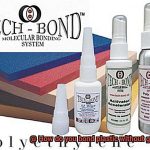Picture this: a seamless fusion of metal and wood, intertwining their contrasting textures to create a masterpiece that exudes both strength and elegance. Whether you’re an artist, a craftsman, or just a DIY fanatic, the art of gluing metal to wood opens up a world of endless possibilities for crafting one-of-a-kind projects that will leave jaws dropping.
In this blog post, we’ll take you on an exhilarating journey, revealing the step-by-step process of achieving that flawless bond between metal and wood. From handpicking the perfect adhesive to prepping your surfaces for optimal adhesion, we’ll unravel the secrets and techniques that will empower you to transform ordinary pieces into extraordinary works of art.
So buckle up and join us as we dive headfirst into the science and artistry behind gluing metal to wood. Get ready to witness the magical union between strength and beauty like never before. Together, let’s unlock your creative potential and bring your wildest visions to life.
What Types of Adhesives Can Be Used to Bond Metal and Wood?
Contents
- 1 What Types of Adhesives Can Be Used to Bond Metal and Wood?
- 2 How to Prepare the Surfaces for Glue Application
- 3 Applying Epoxy Adhesive
- 4 Applying Construction Adhesives
- 5 Using Mechanical Fasteners to Reinforce the Bond
- 6 Considerations for Choosing the Right Adhesive
- 7 Tips for Successful Glue Bonding
- 8 Conclusion
Epoxy Adhesives
Epoxy adhesives are a popular choice for bonding metal and wood due to their strength and durability. They consist of two components – resin and hardener – that need to be mixed together before application. Once mixed, epoxy adhesives create a strong bond that can withstand heavy loads and temperature changes. They are suitable for a wide range of metals and woods, making them a versatile option for various applications.
Polyurethane Adhesives
Polyurethane adhesives are known for their versatility and ability to bond metal and wood effectively. They have excellent resistance to water, heat, and chemicals, making them suitable for both indoor and outdoor applications. Additionally, polyurethane adhesives have good gap-filling properties, allowing them to bond irregular surfaces with ease. However, it is important to note that polyurethane adhesives may require longer curing times compared to other types of adhesives.
Cyanoacrylate Adhesives
Cyanoacrylate adhesives, commonly known as super glue, provide instant bonds when used on metal and wood surfaces that fit tightly together. They are easy to use and offer quick results. However, cyanoacrylate adhesives may not be strong enough for larger or load-bearing pieces. It is important to ensure that the surfaces being bonded fit tightly together to achieve optimal bonding strength.
Construction Adhesives
Construction adhesives like polyvinyl acetate (PVA) or polyvinyl chloride (PVC) can be used to bond metal and wood surfaces. While they are commonly used in woodworking projects, it is important to note that these adhesives may not be specifically designed for metal-to-wood bonding. Therefore, it is crucial to choose a construction adhesive that is suitable for both metal and wood surfaces and provides a strong bond.
Structural Adhesives
Structural adhesives, such as acrylic adhesives, are designed to provide high-strength bonds. They are commonly used in industrial applications where a strong and durable bond is required. Acrylic adhesives can bond a variety of materials, including metal and wood. However, it is important to follow the manufacturer’s instructions for surface preparation and curing conditions to achieve optimal bonding strength.
In conclusion, there are several types of adhesives that can be used to bond metal and wood surfaces. Epoxy adhesives offer strength and durability, while polyurethane adhesives provide versatility and resistance to various environmental factors.
Cyanoacrylate adhesives offer instant bonds for tight-fitting surfaces, but may not be suitable for larger or load-bearing pieces. Construction adhesives can work well for metal-to-wood bonding, but it is important to choose an adhesive that is specifically designed for this application.
Structural adhesives provide high-strength bonds but require proper surface preparation and specific curing conditions. Consider the materials being bonded, the desired strength, and the environmental conditions when choosing an adhesive for metal-to-wood bonding.
How to Prepare the Surfaces for Glue Application
To prepare surfaces for gluing metal to wood, it is crucial to thoroughly clean and prepare the materials. Here are the steps to follow:
Clean the surfaces
Begin by cleaning both the metal and wood surfaces thoroughly. Use a mild detergent and water solution to remove any dirt, dust, or grease that may be present. Rinse the surfaces with clean water and allow them to dry completely before proceeding. A clean surface is essential for proper adhesion.
Sand the surfaces
Next, lightly sand both the metal and wood surfaces using fine-grit sandpaper. This step creates a rougher texture on the surfaces, providing more surface area for the glue to adhere to. Sanding also helps remove any existing finishes or coatings that may interfere with the bonding process. Sand in the direction of the grain for wood surfaces.
Remove rust or corrosion
If the metal surface has any rust or corrosion, it is crucial to remove it before applying the glue. Use a wire brush or sandpaper to gently scrub away the rust until you reach clean metal. Wipe away any residue with a clean cloth. This step ensures a clean and smooth metal surface for optimal bonding.

Apply a primer (optional)
Depending on the type of metal and wood you are working with, applying a primer may be beneficial. Primers can enhance adhesion and prevent future corrosion on metal surfaces. Consult the manufacturer’s instructions for specific primer recommendations based on your materials. Applying a primer provides an extra layer of protection and improves the bond strength.

Test fit and align
Before applying the glue, do a test fit of the metal piece onto the wood surface. Ensure that it fits properly and aligns as desired. This step allows you to make any necessary adjustments before committing to gluing. It is important to have a precise fit for a strong bond between the two materials.
Applying Epoxy Adhesive
Applying epoxy adhesive is an art that requires precision and attention to detail. Whether you’re gluing metal to wood for a DIY project or working on a professional application, following the right steps will ensure a strong and durable bond. Here’s a comprehensive overview of the process:
- Prepare the surfaces: Before diving into the adhesive application, it’s crucial to prepare the surfaces properly. Clean both the metal and wood surfaces thoroughly using a mild detergent or solvent to remove any dust, dirt, or grease that could hinder adhesion. Then, roughen up the surfaces slightly with sandpaper or a wire brush. This step creates a better surface for the epoxy to grip onto.
- Mix the epoxy: Most epoxy adhesives come in two parts – resin and hardener. Carefully read and follow the manufacturer’s instructions to determine the correct mixing ratio. Combining these two components thoroughly is essential for achieving a strong bond. Take your time and make sure they are well blended.
- Apply the epoxy: Now comes the moment of truth – applying the epoxy adhesive. Use a brush, spatula, or another suitable applicator to spread a thin layer of mixed epoxy onto both the metal and wood surfaces. It’s crucial to ensure that every nook and cranny is covered evenly with the adhesive. For hard-to-reach areas or gaps, enlist the help of a small stick or toothpick.
- Press the surfaces together: After applying the epoxy, it’s time to bring the metal and wood surfaces together. Before applying pressure, make sure they are properly aligned. You can use clamps, weights, or other suitable methods to hold them in place while the epoxy cures. Keep an eye out for any excess adhesive that may squeeze out during this process and promptly remove it before it hardens.
- Allow curing time: Patience is key when it comes to epoxy adhesives. Allow the adhesive to cure according to the manufacturer’s instructions. This may take several hours or even overnight, depending on the specific product used. Giving the adhesive ample time to fully cure will ensure maximum strength and durability.
- Check and reinforce if necessary: Once the epoxy has cured, it’s time for the moment of truth – checking the bond between the metal and wood surfaces. Inspect for any weak spots or gaps. If needed, apply additional epoxy and repeat the process. However, in most cases, a properly applied epoxy bond will be robust and long-lasting.

Applying Construction Adhesives
Applying construction adhesives to bond metal to wood requires precision and attention to detail. To achieve a strong and durable bond, follow these steps:
First, start by cleaning the surfaces. Use a clean cloth to wipe away any dust, grease, or contaminants that may hinder adhesion. Stubborn stains can be tackled with a suitable cleaner.
Next, roughen the surfaces. Give them a light sanding or scoring with sandpaper or a file. The goal is to create a rough texture that allows the adhesive to grip onto the materials effectively.
Now, choose the right adhesive. Look for one specifically designed for bonding metal to wood. Consider options like epoxy-based adhesives, polyurethane adhesives, or construction adhesives formulated for this purpose. Select an adhesive that meets the requirements of your project.
With the adhesive ready, it’s time to apply it. Follow the manufacturer’s instructions carefully. Use a brush or spatula to apply an even layer of adhesive onto both the metal and wood surfaces. Ensure complete coverage without any excess adhesive.
Once the adhesive is applied, join the surfaces firmly and securely. Use clamps or weights to apply pressure and maximize contact between the materials. Avoid any disturbances or movement during the curing process.

Be patient and allow sufficient curing time according to the manufacturer’s recommendations. Factors like temperature and humidity can influence curing time, so take those into account.
After the adhesive has fully cured, inspect the bond for any signs of weakness or failure. If necessary, reinforce it with additional adhesive. Don’t forget to consider environmental factors that may impact the bond’s strength and durability.
Lastly, always follow safety precautions when working with construction adhesives. Wear gloves and goggles, and make sure you’re working in a well-ventilated area.
Using Mechanical Fasteners to Reinforce the Bond
Using mechanical fasteners to reinforce the bond between metal and wood is an effective and reliable method to ensure a strong and durable connection. There are various options available, each with its own advantages and suitability for different applications.
One option for reinforcing the bond is screws or bolts. These fasteners can be driven through pre-drilled holes in both the metal and wood surfaces, providing a secure hold. The size and type of screws or bolts used should be chosen based on the thickness of the materials and load requirements. By selecting the right screws or bolts, you can achieve a connection that is capable of withstanding heavy loads and external forces.
Another option is nails, which can be hammered into the wood and partially driven into the metal surface. While not as secure as screws or bolts, nails are suitable for less demanding applications. Using nails with a larger diameter can enhance their strength and stability, making them more suitable for heavier loads.
For specialized applications, metal-to-wood connectors or brackets can be used. These connectors are specifically designed to join metal and wood together, providing an added level of strength and stability. They often feature holes or slots for screws or bolts to be inserted, further enhancing the bond between the two materials.
In addition to traditional fasteners, adhesive-backed metal strips or plates can also be used to reinforce the bond. Made of strong materials like steel, these strips or plates have adhesive on one side that can be applied to the wood surface before bonding with the metal. This creates an additional layer of support, enhancing the overall strength of the connection.
When using mechanical fasteners, it is crucial to ensure proper placement and alignment. Pre-drilling holes in both the metal and wood surfaces helps prevent splitting or cracking, especially in hardwoods. Additionally, choosing fasteners appropriate for the load requirements of the application is essential. Factors like weather exposure and temperature fluctuations should also be taken into consideration when selecting fasteners that are resistant to corrosion or temperature-related issues.
Considerations for Choosing the Right Adhesive
When it comes to choosing the right adhesive for bonding metal to wood, there are several key considerations that must be taken into account. These considerations will ultimately determine the success and durability of the bond. Let’s explore these factors in detail.
First and foremost, compatibility is of utmost importance. Not all adhesives are created equal, and not all are suitable for bonding metal and wood together. It is crucial to select an adhesive that is specifically designed for this purpose. Look for adhesives that are labeled as suitable for bonding metal and wood, as they have been formulated to provide a strong and durable bond between these two materials.
Next, bond strength should be carefully considered. The weight of the metal object being glued, the stress or load it will be subjected to, and the intended use of the bonded materials all play a role in determining the required bond strength. If a strong and durable bond is necessary, opt for adhesives that offer high bond strength. This will ensure that the bond can withstand the forces it will encounter.
Temperature resistance is another critical factor to take into consideration. If the bonded materials will be exposed to high temperatures, it is essential to choose an adhesive that can withstand those conditions without losing its bond strength. Some adhesives are specifically designed to withstand extreme temperatures, while others may degrade or weaken under heat exposure. Selecting an adhesive that can handle the temperature requirements of your project is vital for ensuring long-lasting performance.
The application method also plays a role in choosing the right adhesive. Adhesives come in various forms, such as liquids, tapes, or films. Consider factors such as accessibility, ease of use, and the specific requirements of your project when deciding on an application method. Choose an adhesive that aligns with your needs and makes the application process as efficient and effective as possible.
Drying time is another consideration that shouldn’t be overlooked. Depending on your project’s urgency and the amount of time you need to adjust and position the materials before they set, you may prefer an adhesive that dries quickly or one that allows for a longer open time. Consider the project timeline and your specific requirements to determine the ideal drying time for your adhesive.
Lastly, environmental factors must be taken into account. If the bonded materials will be exposed to moisture, humidity, or chemicals, it is crucial to choose an adhesive that offers resistance to these elements. Additionally, if you require an adhesive that is non-toxic or environmentally friendly, look for options that are labeled as such. Taking these environmental considerations into account will ensure that the bond remains strong and reliable in any given environment.
Tips for Successful Glue Bonding
Choosing the Right Adhesive
The first tip for successful glue bonding between metal and wood is to choose the right adhesive.
There are various types of adhesives available, each with its own strengths and weaknesses. For bonding metal to wood, epoxy, cyanoacrylate (super glue), polyurethane, and construction adhesive are commonly used options.
Epoxy adhesives provide strong bonding properties and are suitable for both indoor and outdoor applications. Cyanoacrylate adhesives offer fast-drying and instant bonding, although they may not be as strong as epoxy adhesives.
Polyurethane adhesives provide excellent flexibility and resistance to moisture, making them ideal for bonding metal and wood.
Proper Surface Preparation
Preparation is key when it comes to gluing metal to wood. Before applying the adhesive, ensure that both surfaces are clean and free from any dust, dirt, or grease. Cleaning the surfaces with a degreaser or rubbing alcohol can help remove any contaminants that could hinder the bonding process.
Additionally, lightly roughening the surfaces using sandpaper or a wire brush can create micro abrasions that enhance adhesion.
Applying the Adhesive
Applying the adhesive evenly and in the right amount is crucial for a successful bond. Too little adhesive may result in weak bonding, while too much adhesive can lead to excess squeeze-out and messy joints. Follow the instructions provided by the manufacturer for proper application techniques. Applying the adhesive in a thin layer and using a spreader or brush can help ensure an even distribution.
Clamping for Strong Bonding
Clamping the metal and wood together during the curing process is essential for achieving a strong bond. Use clamps or weights to hold the two materials tightly together while the adhesive sets. This prevents any movement or separation between the metal and wood, allowing the adhesive to fully cure and create a strong bond. Ensure that the clamping pressure is applied uniformly across the bonded area.
Consider Temperature and Humidity
Temperature and humidity conditions play a significant role in glue bonding. It is important to follow the manufacturer’s instructions regarding temperature ranges for optimal bonding. Extreme temperatures can affect the adhesive’s performance, so it is crucial to work within the specified range.
Similarly, high humidity levels can prolong curing time or weaken the bond. Working in a controlled environment with moderate humidity levels can help ensure successful glue bonding.
Allow for Sufficient Curing Time
Giving the adhesive sufficient time to cure is vital for a strong and durable bond. Different adhesives have varying curing times, so it is important to be patient and avoid disturbing the bond prematurely. Follow the manufacturer’s instructions for the recommended curing time before subjecting the bond to any stress or load. Rushing the process can result in a weak bond, while allowing ample curing time ensures optimal strength.
i6_2g4A3EyY” >
Conclusion
When it comes to bonding metal and wood together, finding the right adhesive is crucial.
There are several options available, each with its own strengths and weaknesses. One popular choice is epoxy, which provides a strong and durable bond.
Another option is polyurethane adhesive, known for its flexibility and resistance to moisture. For smaller projects or temporary bonds, you can also consider using super glue or construction adhesive.
Whichever adhesive you choose, it’s important to properly prepare the surfaces by cleaning them thoroughly and roughening them up for better adhesion. Additionally, applying pressure while the adhesive cures will help ensure a solid bond.
Remember to follow the instructions provided by the manufacturer for the best results.






